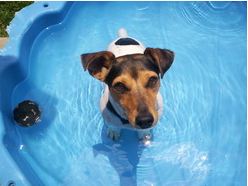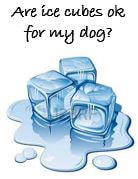What is Animal Hydrotherapy?
Hydrotherapy is the use of water to promote the healing process. It is a non-stressful form of exercise and can be as basic as soaking in a warm bath, submerge the body or part of the body in a spa bath, swimming in a pool, using an underwater treadmill or other water activities that provides a range of motion and exercise to limbs, bones, joints, muscles or nerves.
The primary advantage to Hydrotherapy is that it is a weightless environment that promotes the use of the limbs, and provides a range of motion and movement generally not attainable with normal exercise or rehabilitation programs.
During the exercise the animal can move a limb with minimal stress or strain, thus allowing the muscle to move and strengthen and allow the tendons and ligaments to tighten up. Dogs that refuse to put weight on, or even use a leg following surgery will typically use the leg without any discomfort in the swimming stroke.
In order to appreciate the benefits of Hydrotherapy, one must understand the basic principles and properties of water including buoyancy, viscosity, resistance, hydrostatic pressure, surface tension and the impact of the water temperature.
Pre-Operative Conditions and Post-Operative Rehabilitation
Hydrotherapy is indicated in the following conditions:
Hydrotherapy is the use of water to promote the healing process. It is a non-stressful form of exercise and can be as basic as soaking in a warm bath, submerge the body or part of the body in a spa bath, swimming in a pool, using an underwater treadmill or other water activities that provides a range of motion and exercise to limbs, bones, joints, muscles or nerves.
The primary advantage to Hydrotherapy is that it is a weightless environment that promotes the use of the limbs, and provides a range of motion and movement generally not attainable with normal exercise or rehabilitation programs.
During the exercise the animal can move a limb with minimal stress or strain, thus allowing the muscle to move and strengthen and allow the tendons and ligaments to tighten up. Dogs that refuse to put weight on, or even use a leg following surgery will typically use the leg without any discomfort in the swimming stroke.
In order to appreciate the benefits of Hydrotherapy, one must understand the basic principles and properties of water including buoyancy, viscosity, resistance, hydrostatic pressure, surface tension and the impact of the water temperature.
Pre-Operative Conditions and Post-Operative Rehabilitation
Hydrotherapy is indicated in the following conditions:
|
|
Benefits of Hydrotherapy
The benefits of Hydrotherapy are countless, but to highlight just a few:
The benefits of Hydrotherapy are countless, but to highlight just a few:
|
|
|
When I first heard the question: Are ice cubes dangerous?, my first response was: "only if someone throws an ice cube at a dog’s eye," but this question seemed to linger, gaining momentum due to a post online.
|
Some people love the smell of Fritos Feet and others absolutely hate it! What causes this odour and what can you do about it?
|
Through the studies by Neitz, Geist and Jacobs (2) it has been suggested that an average dog sees similar to a human deuteranope, a person that is red-green colour blind.
|






